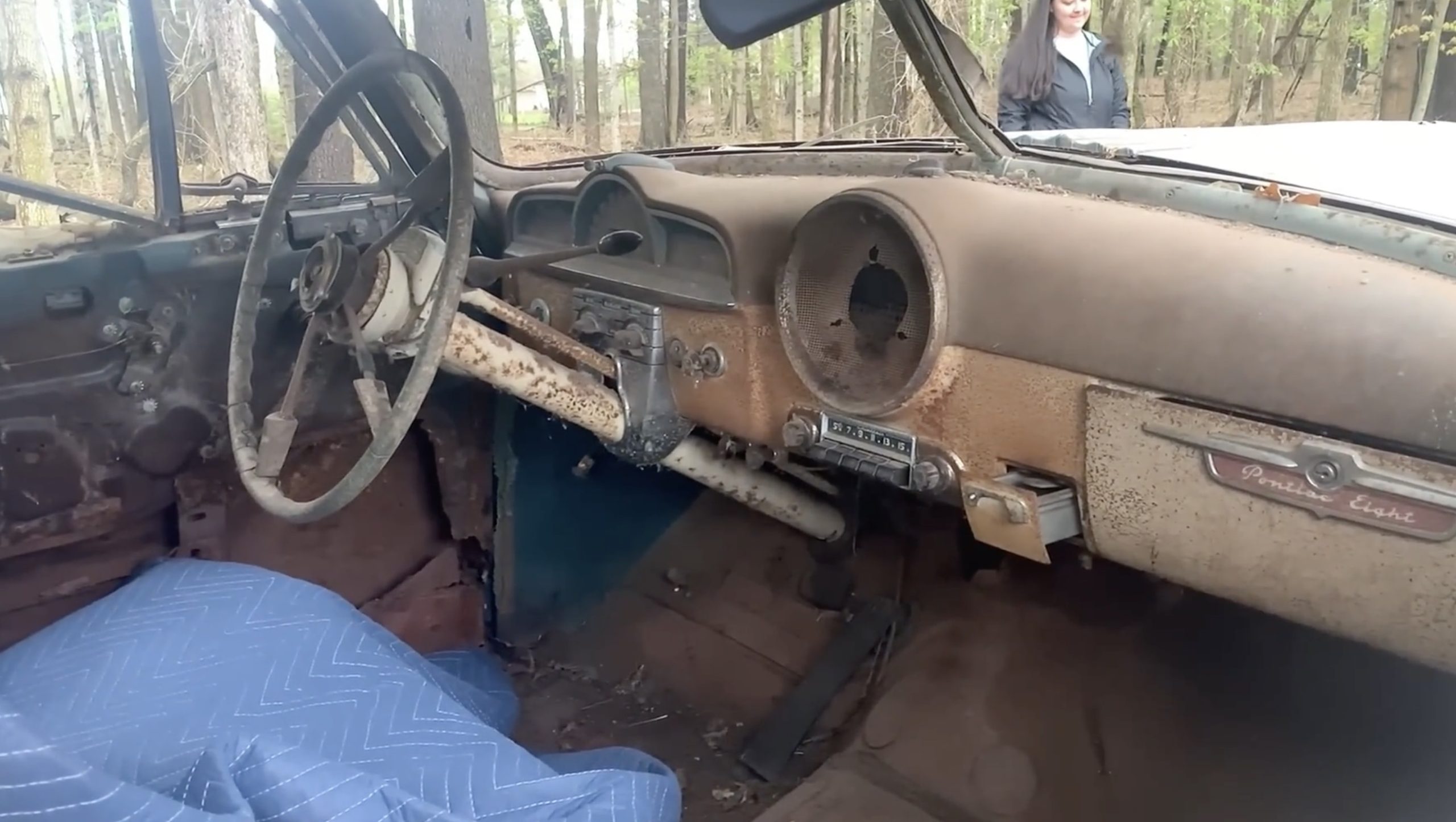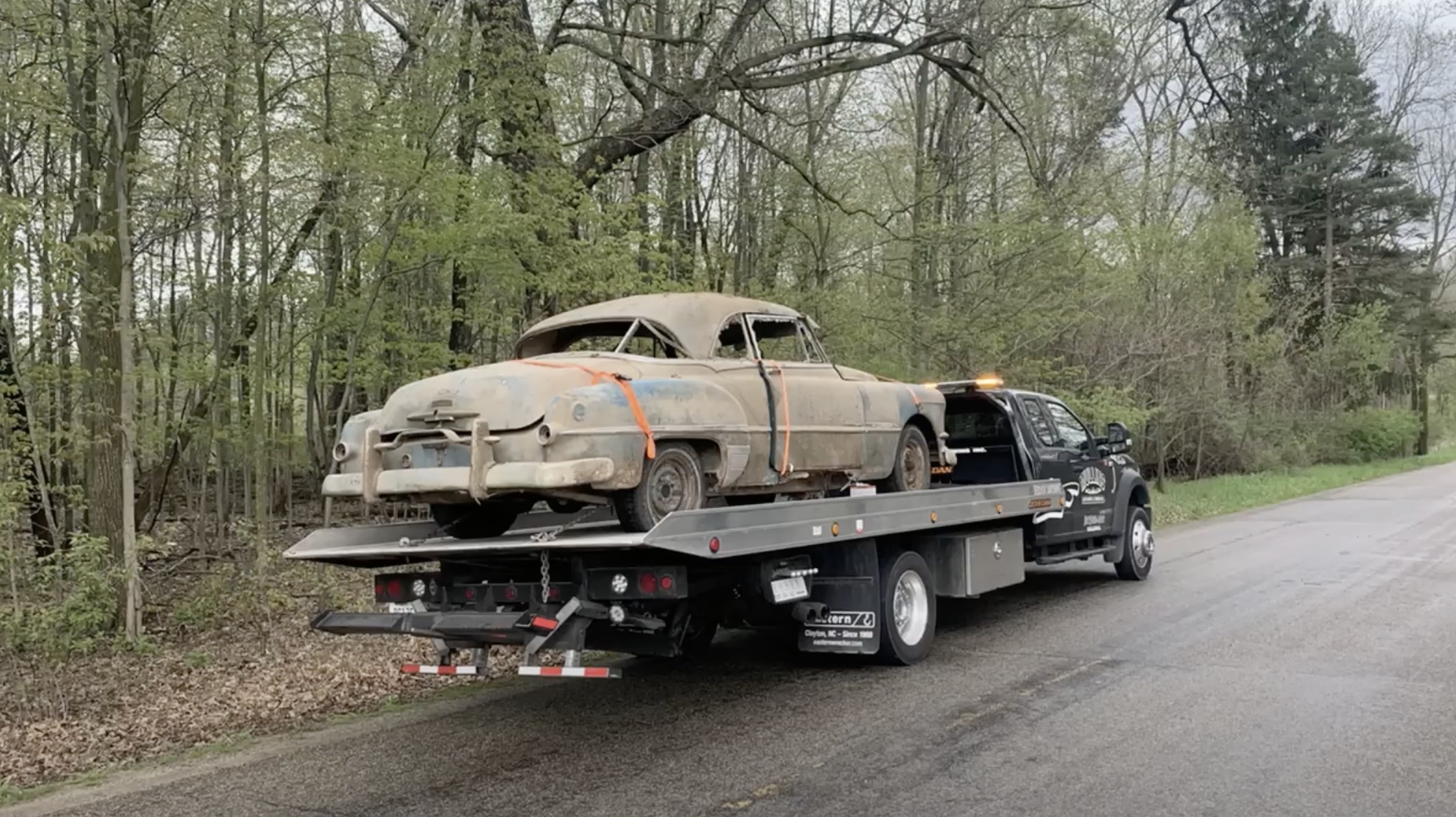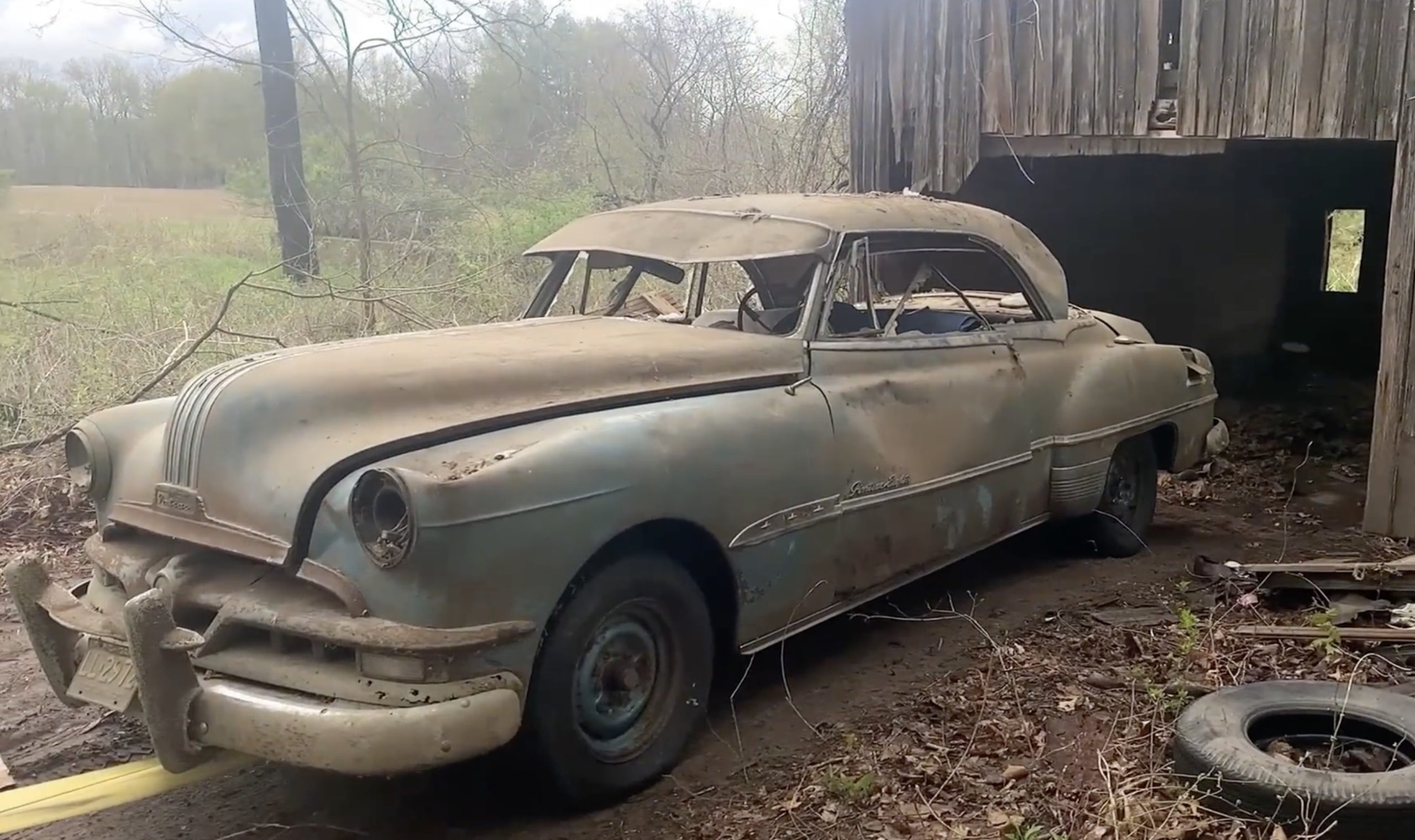In the heart of a forgotten barn, nestled amidst a sprawling woodland, lay a time capsule. A 1951 Pontiac Super Deluxe Catalina, once a symbol of American automotive grandeur, had stood sentinel for decades.
Its owner, a decorated Marine and former football star, had parked it there in 1968, leaving it to slumber in a forgotten corner of history. The car’s story began in 1951, when a young Marine named Dominic Bulgarella purchased it brand new from Goodwood Pontiac in Grand Rapids, Michigan.
Bulgarella, affectionately known as “Bulgy,” had served in the Korean War, enduring the harrowing ordeal of the Chosin Reservoir campaign. His experiences there had forever shaped his life, leaving him with both physical and emotional scars.

Despite the hardships he faced, Bulgarella found solace in his Pontiac. The car represented a time of peace and normalcy, a stark contrast to the chaos of war. He drove it with pride, enjoying the open road and the sense of freedom it provided. However, as time went on, Bulgarella’s life took a different direction. He eventually parked his beloved Pontiac in the barn, where it remained untouched for nearly fifty years. The car became a forgotten relic, a testament to a bygone era.
The story of the forgotten Pontiac would have remained unknown had it not been for a chance encounter. A young boy, exploring the woods with his father, stumbled upon the barn and discovered the hidden treasure. Intrigued by the car’s unique appearance, the boy began to research its history.
With the help of a farm tractor, Jace managed to extract the car from its earthen tomb. After decades of seclusion, the Pontiac finally saw the light of day. He transported it to his grandparents’ house, where he subjected it to a much-needed power wash. The grime and dirt were finally removed, revealing the car’s original turquoise paint.
The restoration process was meticulous and time-consuming. Jace carefully disassembled the car, labeling each component to ensure proper reassembly. His fiancée, a supportive partner, joined him in the endeavor. As they worked, they discovered the car’s hidden secrets: a hoard of trash beneath the seats, evidence of rodent infestation, and extensive rust damage.

Undeterred by the challenges, Jace pressed on. He sandblasted the frame, which surprisingly remained intact, and repainted it black. He replaced worn-out suspension components, learned new skills like welding, and even disassembled the rear axle himself, defying the advice of experts.
To source necessary parts, he acquired two more 1952 Pontiac Catalinas that were destined for the scrapyard. One year into the project, Jace’s Pontiac remained a work in progress. He had reassembled the body panels, ensuring they were aligned perfectly.
Despite the criticism from those who questioned the value of restoring a “pile of rust,” Jace remained steadfast in his pursuit. For him, it wasn’t just about the car; it was about the story, the history, and the personal connection he had formed with the Pontiac.

